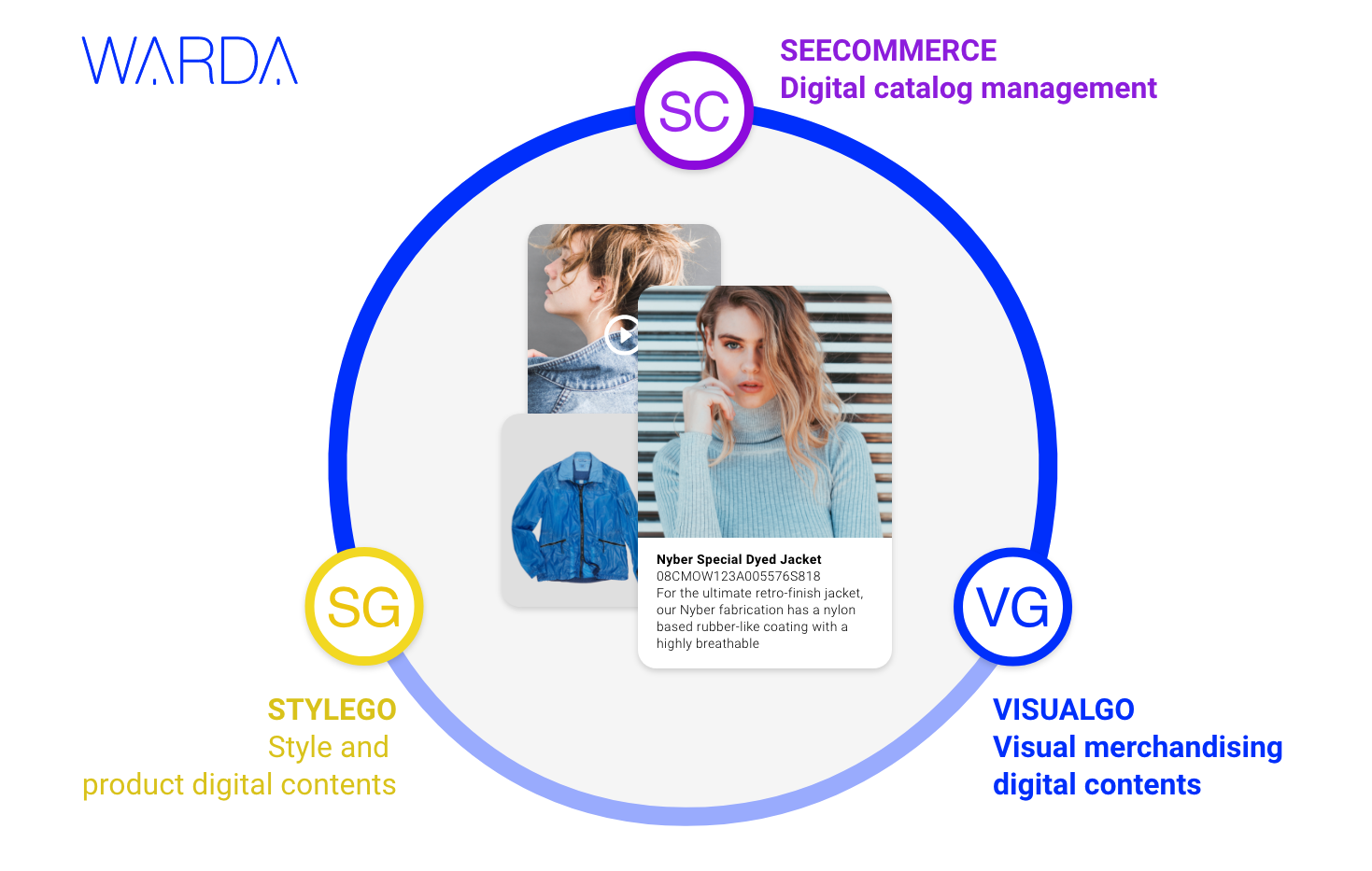
How to tackle digital transformation, with the right tools, in the Phygital era
It’s all about content
Attention to consumer needs is leading fashion and consumer goods companies to accelerate and adopt new strategies, especially considering recent events as well.
Many brands today have decided to take photos and draft descriptions for their wholesale customers’ catalogs as marketplaces or stores with their own ecommerces.
Brands produce a flood of digital content, and managing it manually is now impossible: editorial control and its global distribution are very complex activities not to be managed in an organized way.
However, the approach toward a transformation of this kind is very delicate, it is in fact a cultural evolution of the company that is sometimes very complex, in which technological tools must be adapted: offering users a simple and pleasant user experience helps to accompany work teams to operate in a harmonious and immediate way; adopting flexible tools means adapting the organization to a new way of working without upheaval and friction.
But what is Digital Transformation?
The main points to consider
1) Involve all of the Brand’s digital content.
The first mile to go toward digital transformation in your company is to engage and manage all content created during the product lifecycle:
- in product development–photos and descriptions of sketch drawings, photo/video prototypes, and samples,
- In promotion – photos and videos of marketing campaigns, branding, PR, social
- In B2C and B2B online sales – photos, videos and product page descriptions
Digital content thus represents the main information to support online and omnichannel sales strategies, so it is very important to have attention to the process of writing, checking and publishing the information that describes the product in every respect.
The connection between physical and digital is growing stronger. Digital content describing products represents the information needed to populate online catalogs for both the B2C (e-commerce) as well as for the B2B (order management, wholesale catalog, etc.).
2) Centralize information and processes to make Brand identity consistent in omnichannel perspective
Maintaining a consistent identity throughout the internal journey (from production to product distribution) and among the many touchpoints where all content is enjoyed, may not be so easy. In fact, depending on their nature, content is often created and managed by different business areas (e.g., product department and marketing department) or even external stakeholders.
To make the brand’s communication line consistent and unique, it is important that all areas are aligned with a single truth of the product, through a centralized source of information, so that the content creation, approval and publication processes where internal and external users are involved are easily monitored.
Many brands today decide to provide digital content directly to their customers who will use it in their marketplace or e-commerce site so as to ensure continuous digital consistency for the product.
In short, the controlled and centralized content production chain leads to an inevitable reduction in the time-to-market of content and in doing so to a definite improvement in Brand reputation.
3) Choose appropriate software tools to reduce the risk of error and speed up time-to-market
Centralization of digital product content creation and management processes deserves extreme attention and needs software tools that can ensure that the goal is achieved without stumbling.
Here then is where all content management takes place in one system, where internal teams and external stakeholders (photographers, post-producers, copyright, translators, etc.) collaborate, even remotely, giving the brand more control over processes.
ERP manages so-called structured data and information (price, product data, etc.). Content is managed in a system of Content Management associated with product information. The Product Content Management has within it all the information from the ERP plus all the media content (photos and videos).
4) Choose an effective system of for content distribution
The use of an appropriate software solution is very important, especially as it relates to distributing content to the many B2B and B2C touchpoints.
An effective Product Content Management system with content syndication functions allows product information to be distributed quickly across a multitude of channels while keeping the publication status with respect to each individual touchpoint monitored at all times. To avoid publication errors, it is equally important that there is a system upstream that keeps track of the completeness of this information, which is necessary to define ready-for-sale products.
Optimal deployment embedded within a centralized system minimizes the risk of error, providing excellent results in terms of user experience.
>
Learn more in our article on content syndication
> Learn about Content WARDA Distribution and the AMAZON CLOUFRONT CDN.

WARDA tools to support Digital Transformation in fashion, luxury and consumer goods
Through content management, then to the optimization of content creation and distribution activities from an omnichannel perspective, the goal is to improve business processes and Brand performance.
For years engaged in digital transformation projects for clients such as OVS, MONCLER, GEOX, CALZEDONIA, BRUNELLO CUCINELLI and others, WARDA has developed cloud software solutions specifically suited in the fashion and accessories market, used in an omnichannel environment on an international scale available with a pricing model pay-as-you-grow For companies of all sizes and types.